#The Estate at Florentine Gardens
Photo
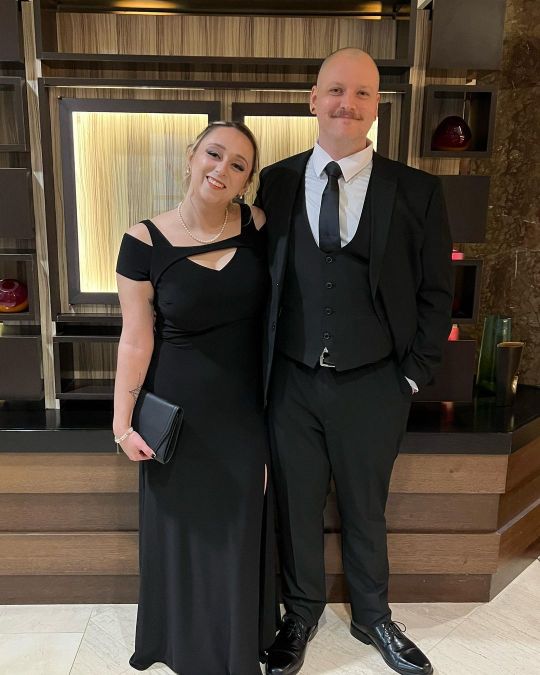
🍯🐻 (at The Estate at Florentine Gardens) https://www.instagram.com/p/CqJm64DslNE8upjFaO9-8Tu_mtf4VIw9680Zxg0/?igshid=NGJjMDIxMWI=
8 notes
·
View notes
Text
youtube
The Estate at Florentine Gardens Wedding of Gionna & Dimitrios
newjerseyvideography.com/ - (732) 986-6332.
This is Wedding Video Highlights created for Gionna & Dimitrios, whose Ceremony was held at Ss. Nicholas, Constantine & Helen Greek Orthodox Church in Roseland, NJ and Reception at The Estate at Florentine Gardens in River Vale, NJ. The video was captured by 1 wedding videographer. This video was captured and edited by New Jersey leading Wedding Photography & Wedding Cinematography Studio – New Jersey Videography.
#new jersey wedding photographer#wedding videos nj#nj photographers#nj videographer#videography and photography nj#photographers in nj#Youtube
0 notes
Text
A Virtual Tour Of Their North Jersey Wedding Venue
The Virtual Tour that we got from 360SiteVisit.com and the stunning panoramic shots they took to give the viewer that immersive, personal perspective we were looking for. Website: https://www.360sitevisit.com/blogs/the-estate-at-florentine-gardens
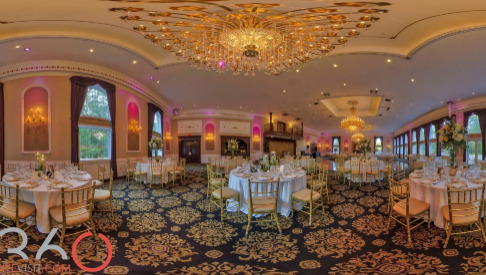
0 notes
Photo

Doris + Brad. Bridal Party Composite. @b_rad6987 @dorizz_open . . . #njweddingphotographer #estateatflorentinegardens (at The Estate at Florentine Gardens) https://www.instagram.com/p/CivnZQPJ7Vk/?igshid=NGJjMDIxMWI=
0 notes
Text
NJ Wedding Photography at The Estate at Florentine Gardens with a Nikon D4s & D750 and a stack of lenses
NJ Wedding Photography at The Estate at Florentine Gardens with a Nikon D4s & D750 and a stack of lenses
Follow us on Instagram @pavelshpakphoto #pspistudios Like it & Love it & Share it 🙂
http://www.PSPiStudios.com NY – NJ – Worldwide Wedding + Event Photography & Cinematic Video. Where Contemporary Fashion Photography Meets Creative Candid Photojournalism.
A contemporary take on the classic short telephoto macro lens, the Nikon AF-S VR Micro-NIKKOR 105mm f/2.8G IF-ED


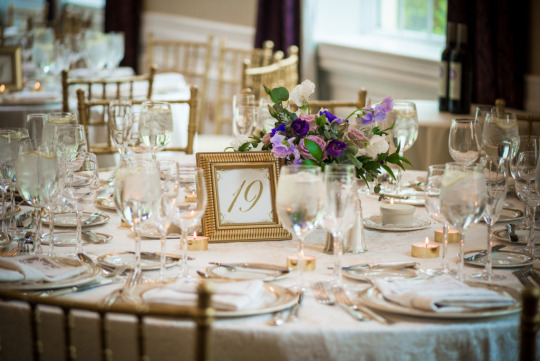
Nikon 70-200mm…
View On WordPress
#Nikon 14-24mm AFS f/2.8 G ED#Nikon 70-200mm f/2.8G VR II#Nikon AF-S 24-70mm f/2.8 G ED#Nikon AF-S VR Micro-NIKKOR 105mm f/2.8G IF-ED#The Estate at Florentine Gardens
0 notes
Text
For centuries, the Indigenous cultures of present-day Mexico manufactured a brilliant red colorant called "prickly pear blood."
Nocheztli was the name the Mexica (Aztecs) gave this red colorant in their language Nahuatl. That is because in Nahuatl, the cacti were called nopalli and nochpalli, and their fruits were called nochtlí. Thus nocheztlí means blood (eztli) of the cactus (nochtlí,) or "prickly pear blood."
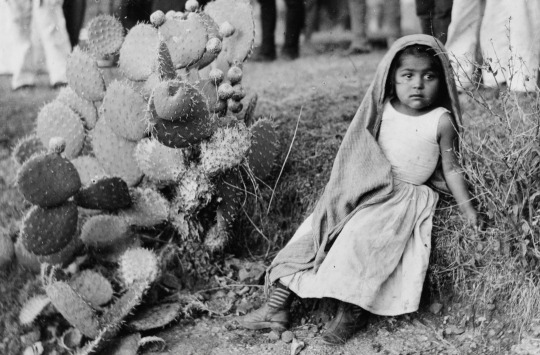
The colorant was actually made, however, from a parasitic insect of the prickly pear cactus, rather than the red prickly pear itself. The vivid carmine red color obtained from this insect evoked the image of blood and the juice of the red fruit.
The insect from which the dye is obtained is popularly called cochineal grana. Its scientific name is Dactylopius coccus . In Nahuatl it was called nocheztli which means "nopal blood" and in Mixtec ndukun which means "blood insect".
Both the insect and the colorant are known as cochineal.
Each pre-Hispanic indigenous culture had a different name for the insect. This ethnolinguistic element indicates the knowledge and early use of coloring by different ethnic groups before the arrival of the Spanish.

The colorant made from the cochineal insect was an astonishingly vivid red. Red was an important color for Mesoamerican cultures as it signified blood, and therefore life.
Indigenous peoples had many uses for it including as a medicine, a cosmetic, a dye for textiles, and a paint for hand-drawn manuscripts.
Mesoamerican manuscripts are important because they give insight into the people represented on them, as well as aspects of their culture. These colorful manuscripts also shed light on the expertise of the Indigenous craftspeople that made them.
The Library of Congress has three significant 16th-century Mesoamerican manuscripts that were all painted with carmine red: the Huexotzinco Codex, the Oztoticpac Lands Map, and the Codex Quetzalecatzin.
But what do we know about cochineal?
Cultivation of Cochineal

Cochineal was primarily cultivated by individuals from cactus plots found on their lands. The production of cochineal was time-consuming and involved several steps.
First the cacti were planted and allowed to grow for up to three years in order to host the insects. After the cacti reached the appropriate size, the Indigenous farmer attached nests containing female insects to the cacti. For 90 to 120 days cochineal insects were allowed to infest the host cacti. After this period of infestation, harvesting involved removing the insects from the cacti by hand with the aid of a pointed stick or a brush. Harvesting domesticated cochineal occurred two or three times per year.
Interestingly, only female insects were harvested because the component responsible for the red dye is solely carried by wingless females. The female of this species, whose life cycle is three months, is the one that contains carminic acid, a substance that is synthesized as a dye. The insect uses this substance as a defense mechanism against predators such as ants. For its part, the male does not require this defense since its vital cycle is brief, it is reduced to a week in which it fulfills the reproductive function and then dies.
A glimpse into cochineal cultivation is provided by the French botanist Nicolas-Joseph Thiéry De Menonville who published an account of his travels in 1777 to Oaxaca to obtain, albeit illegally, the insect for France.
"On arriving at Galiatitlan, I saw a garden full of nopals, and had no doubt I should there find the precious insect I was so desirous to examine. I therefore leapt from my horse, under pretense of altering my stirrup leathers, entered the grounds of the Indian proprietor, began a conversation with him, and enquired to what use he put those plants? He answered, “to cultivate la grana.” I seemed astonished, and begged to see the cochineal; but my surprise was real when he brought it to me, for instead of the red insect I expected, there appeared one covered with a white powder. I was tormented with the doubts I entertained, and to resolve them bethought me of crushing one on white paper; and what was the result? It yielded the truly royal purple hue.”
Grana is the Spanish term for cochineal that translates as "grain," possibly because the dried cochineal insect look like grains or seeds.
What then do we know about how the brilliant carmine colorant was made from the cochineal insect?
Cochineal Colorant Preparation
Sixteenth-century sources provide eyewitness accounts of the production of Indigenous Mexican artist materials. One of the most important sources is the Florentine Codex, or The General History of the Things of New Spain, compiled by Franciscan Friar Bernardino de Sahagún. Twelve books describe the culture and peoples of central Mexico, with detailed descriptions in Spanish and Nahuatl, as well as illustrations of artists materials like cochineal.

After harvesting, the insects were then prepared for processing into a colorant. The first part of the process involved killing the cochineal insects. This was accomplished by drying in the sun, heating in ovens or on hot plates, boiling, or steaming. Regardless of the method employed, the end result of this process was dried insects.
To make a red dye or paint, the dried silver cochineal "grains" are ground into a powder that is then boiled in water. Since the cochineal is an organic colorant, its coloring agent carminic acid must be stabilized with the addition of a mordant, a metallic salt. Powdered alum (potassium aluminum sulfate) was a mordant commonly used by Mesoamerican craftspeople.
Cochineal is sensitive to changes in pH, and as such, its color can vary. Cochineal colorants can range from orange when an acid, like vinegar, is added to the recipe to purple when a base, like ammonia, is added.
The primary uses for cochineal were as a dye for textiles and as a paint. To make a paint, the cochineal insects were soaked in water, ground into a paste with alum, and formed into tablets that were allowed dry.
Tablets of cochineal paint, as well as other paints and artist materials, were made available to artisans in markets throughout Mexico. It is likely that Indigenous scribes painted the red areas on manuscripts with cochineal tablets obtained from these markets.
A large variety of items were sold in Mesoamerican markets including food, raw materials, and artist pigments. The largest market was in Tlatelolco, a neighborhood in present-day Mexico City. Descriptions of the Tlatelolco market were published by Spanish conquistadors Hernán Cortés and Bernal Díaz who were astounded by its large size and the variety of items sold there.
Markets remain an important cultural tradition in Mexico to this day.
Mesoamerican Manuscripts at the Library of Congress
The Codex Quetzalecatzin resides in the Geography and Map Division. Created circa 1593, it is a genealogy map showing the ancestral lands of Lord-11 Quetzalecatzin and his descendants, the de Leon family, between the years 1480 and 1593. It is also known as the Mapa de Ecatepec-Huitziltepec because the de Leon holdings ranged from Ecatepec (near Mexico City) to the north, to Huitziltepec in Oaxaca to the south, with southern Puebla in between.
An Indigenous scribe, or scribes, likely created the codex because it is drawn in a mostly Indigenous artistic style with pictographs that convey information relating to space and time, and toponyms (place-glyphs) relating to specific locations.
Codex Quetzalecatzin
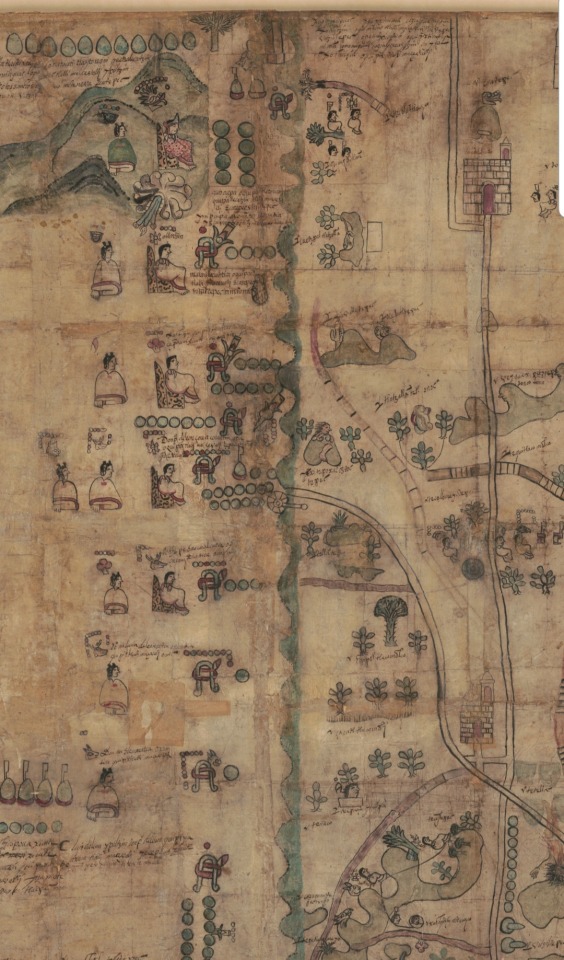
Brilliant carmine red was liberally painted all over the Codex Quetzalecatzin.
The color red is prominently used on the garments of the Indigenous elites. A rich red decorates the borders of the noble women's blouses and skirts and the cloaks of the noble men. Not surprisingly, Lord-11 Quetzalecatzin has the most splendid garments of all with his richly patterned red cloak and headdress.
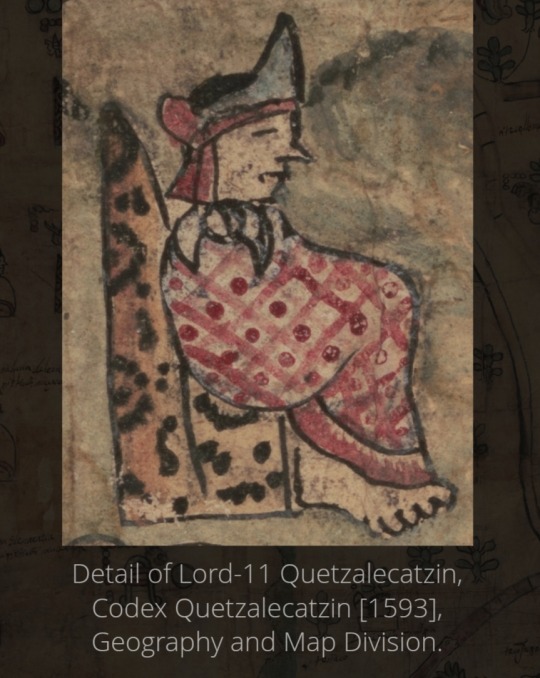
It is not surprising that red paint appears on the codex in many areas, since Puebla and Oaxaca were primary regions of cochineal cultivation during the 16th century. As nopal cacti are prominent features on the codex, it is possible that the de Leon estate produced cochineal.
The Oztoticpac Lands Map, also part of the Geography and Map Division collections, was created around 1540. It concerns the litigation of the estate of the Texcoco lords after one of their members, Don Carlos Ometochtli, was executed for idolatry. Texcoco, a neighbor to Mexico City, was a partner to the Mexica (Aztecs.) The map depicts the Palace of Oztoticpac, land plots of villagers.
Oztoticpac Lands Map
Color was sparsely used on the map, and has faded over the years. Purplish-red lines and Indigenous counting numerals (bars and dots) were used to denote the borders and size of lands owned by the Texcoco nobility.

The Huexotzinco Codex is part of the Harkness Collection in the Manuscript Division. It is one of the earliest Mesoamerican manuscripts from the early colonial era of Mexico. As such, it is a thoroughly Indigenous manuscript as its story is told through pictographs showing the types of tribute items and the Indigenous counting systems.
The Huexotzinco Codex was created in 1531 for the legal case that conquistador Hernán Cortés brought against three members of the first Spanish colonial government in Mexico. The case accused the three government officials of stealing from Cortés by demanding excessive tribute from the people of Huexotzinco when he was in Spain. After the Spanish invasion, Cortés considered the land, natural resources, and the people of Huexotzinco to be his property because the Huexotzincas allied themselves with him during the war against the Mexica. Included in the court proceedings are eight Indigenous paintings submitted as evidence that depict the tribute handed over to the officials.
The eight paintings were produced by Indigenous scribes with Indigenous materials. While seven of the paintings are painted with red, vivid carmine red features prominently on two of them.
Huexotzinco, in the Mexican state of Puebla, was a major producer of cochineal in the 16th century.
Huexotzinco Codex
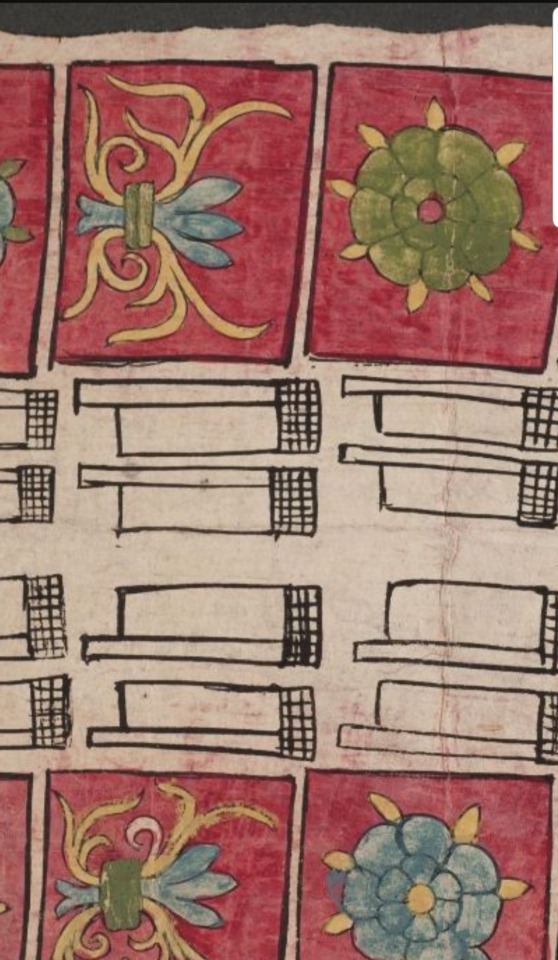
Painting III shows twenty cotton cloths, each richly decorated with an Indigenous calendrical pictograph (Rabbit, Reed, or Flower) representing the count of years or days. A brilliant red background offsets the pictographs. Notably red was used as the background on all of the twenty cloths and was also the most-used colorant.


Colorful, ornamented clothing of cotton and rabbit fur were reserved for the elites of Mesoamerican societies. Thus the carmine red textiles prominently featured on two codex paintings provide insight into the Huexotzinco community as well as the artisans working there.
The three Library of Congress Mesoamerican manuscripts (the Codex Quetzalecatzin, the Oztoticpac Lands Map, and the Huexotzinco Codex) have a shared history. They were created during the first century of the newly formed Spanish colony of Mexico.
Another shared aspect found on all three manuscripts is the use of carmine red paint to illuminate features that were important and specific to the people depicted on them, and to the scribes who painted them.
While visually the reds on the three Library of Congress manuscripts appear to be cochineal, to date material analysis has only confirmed the red on the Huextzinco Codex paintings to be cochineal. Hopefully future scientific analysis will also identify the reds of the Codex Quetzlecatzin and the Oztoticpac Lands Map.
While Spain profited from the production and export of cochineal, credit must be given to the Indigenous Mesoamerican peoples who developed this stunning red, this "prickly pear blood," and gave it to the world.
Once discovered by Spaniards, cochineal became one of the most valuable commodities in Europe. In 1758 alone, Oaxaca exported more than 1.5 million Spanish pounds of it for various uses, including the dying of fabrics for red uniforms worn by British soldiers. It was the most exported from New Spain during the 16th century, after gold and silver.
For centuries Europe sought an intense red that would last over time in textiles such as wool and silk. They had not found a dye with these characteristics until the discovery of cochineal. It was so prized, Spain kept secret that it came from a bug instead of a plant.
The Italian dyers of the 16th century, based in Venice and Florence, were the main buyers of dyes.
Later, in later centuries, this changed and it was the French, the Dutch and later the English who bought the scarlet, both in formal and informal trade through smuggling.
Apart from the textile industry, which is where it had its most widespread use, famous painters such as Rubens, Velázquez and El Greco, among others, also used pigments based on the cochineal grana to add unique colors in their works.
Museum conservation and restoration laboratories in different parts of the world have confirmed the presence of the dye bug in many important works.
The cochineal cochineal from New Spain produced a "boom" in European markets , says Huémac Escalona. It was the second good that generated the most profits for the people involved in its trade, both Spanish and Indian.
The Spanish crown retained the monopoly of this product throughout the colonial period; For this, it kept the secret of its nature and production, preventing the live insect from leaving New Spain. When the Spanish referred to the large cochineal they always used terms that referred to agriculture, so that competitors from other nations believed that it was a vegetable product, a fruit of a plant or a seed.
Today it can also be found as a natural food coloring.
Production of dye in Oaxaca
In the 16th century and the first part of the 17th century, the most intense production of cochineal was located in the Tlaxcala and Puebla areas. Oaxaca was the cradle of domestication of the large cochineal; it also produced in those years but not so intensely. It was not until the second half of the seventeenth century when its production increased, until it produced 99 percent of the scarlet that was exported to the entire world in the eighteenth century.
The relationship between indigenous producers and Spanish merchants around the grana was not without tensions and conflicts, despite this, the wealth it generated allowed that relationship to last over time.
The historian recalls that the indigenous communities accepted to produce the cochineal because it allowed them to have their own social organization and allowed them to have money for their festivals and to pay taxes. Although these were impositions of the colonial regime, these burdens were assumed in such a way as to allow them to have an organizational structure according to their traditions.
The rearing of the insect was an economic activity in which the whole family participated and could be combined with other tasks. The production and trade of grana articulated the economy of various regions of Oaxaca. There were towns that specialized in grana, others combined its production with the manufacture of blankets or the cultivation of corn and wheat. While others were dedicated to making the various containers where the dye was transported.
Most of the indigenous peoples, for their part, became producers of the dye because it meant a more or less secure way of obtaining resources to cover their community expenses and cover tax burdens. This was not exempt from the enrichment of sectors of its population. However, it was not the norm but rather the exception.
Grana connected the economy of societies so different and so far away : Indigenous peoples from the Oaxacan regions with European, African and Asian societies. For the Oaxacan indigenous people, the scarlet was the product that gave them benefits but also caused them discomfort. The constant international demand for dye led to the adaptation of their collective life, governed by a set of beliefs and traditions of their own, to an intense production system.
The traces of the scarlet in Oaxaca are everywhere: in civil and religious public buildings, in merchants' houses, in textiles, in its archaeological remains, in pre-Hispanic and colonial documents, painted with pigments made from the cochineal or where its production and trade were registered. It shows the importance that the precious dyeing insect known as grana cochineal had for the history of Oaxaca and Mexico.
A red color, really Mexican?
In recent years, there has been a debate about the American zone of origin of the dye . A group of scholars assured that the cochineal was domesticated in South America, in the Andean area, due to the discovery of textiles dyed with this dye in various archaeological sites and whose dating dates back to the first centuries after Christ.
Other specialists affirmed that it was in Mesoamerica, specifically in Oaxaca, where the first domestication of the insect was carried out together with the nopal. It is believed that it passed from Mesoamerica to Central America and from there to South America through the cabotage trade.
Recently, a scientific study was carried out that analyzed the mitochondrial DNA of the cochineal cochineal samples from Oaxaca and Peru. The results showed that the genetic variety from Oaxaca is older and more diverse. This confirms that the domesticated dyeing insect is native to the Mesoamerican region corresponding to the current state of Oaxaca, in southern Mexico.
Sources: (×) (×) (×)
#indigenous#mexico#aztec#france#Nicolas-Joseph Thiéry De Menonville#animal#insect#spain#europe#hernan cortes#🇲🇽#italy#dutch#new spain#history#mexican history#oaxaca#puebla#oaxaca mexico#puebla mexico#long post#asia#africa#south america#central america#latin america#peru#nahuatl
102 notes
·
View notes
Photo

@berta beauty @aimeecapper 🤍 @photo_dh 📷 (at The Estate at Florentine Gardens) https://www.instagram.com/p/CS8eZeAIEC-/?utm_medium=tumblr
1 note
·
View note
Text
Secret Love Affair
Ezio had run into her in the gardens on the Castelo de Sant’Angelo while he was on a mission to assassinate Rodrigo and Cesare Borgia, but instead the mission had turned into a rescue mission for Caterina Sforza when neither Rodrigo or Cesare were in the castelo. Though he knew that Lucrezia was a Borgia, from what he had seen she wasnt like her father or brother, she was a beautiful and sweet young woman.
Perhaps she was a little naive, but that didnt matter to him all he knew was that he couldnt get his mind off of her. The old part of himself, the young teen Florentine noble boy was shining through, it was a part of him that had long since died when he saw his father and brothers hanging at the end of a hangman’s noose.
Finally he set himself to track her down and tracked her down to a villa that was outside the city of Roma, the estate was heavily guarded but it was no match for him. He had managed to get through the large estate and large number of guards undetected until Ezio was standing behind her in the garden, “Ciao Bella.” he greeted her in a charming low tone. He stood behind her in his white assassins robes trimmed in red, silver bracers on his wrists hiding the blades he wielded, the ornate belt on around his waist with the crest of his order showing and the throwing knives set neatly on the belt which also held a prestine rapier sword.
@wearenotthesameasyesterday

#wearenotthesameasyesterday#muse: ezio auditore#secret love affair#verse: ac brotherhood main au#add to tracker
3 notes
·
View notes
Text
@iilvecchio ♡‘d FOR A STARTER

𝐓𝐇𝐄 𝐑𝐈𝐕𝐄𝐑 𝐀𝐑𝐍𝐎 𝐖𝐇𝐈𝐒𝐏𝐄𝐑𝐒 𝐐𝐔𝐈𝐄𝐓𝐋𝐘 𝐀𝐓 𝐒𝐔𝐍𝐒𝐄𝐓. almost a siren song, it lures athena out of the rys’ estate and into the gardens overlooking near every evening. in the distance: the florentine city walls, a crest of white stone huddled between. alas, her peace does not fail to be disturbed. usually, one of her sisters comes tumbling from the path. this time, AN UNEXPECTED VISITOR is the source of her surprise.
‘ cosimo? ’ a hushed voice begins, hands gathering up her skirts as she stands and steps in a flurry. ‘ what brings you here alone? and at this hour too? ’
#iilvecchio#* 𝐢. THREADS#* 𝐯. MEDICI#* 𝐫. ATHENA & COSIMO ↷ we are asleep until we fall in love#i am a sucker for athena/cosimo Soft™ interactions so here u go
22 notes
·
View notes
Photo

The Estate at Florentine Gardens's BLOG & Virtual Tour captures this gorgeous venue. See how fabulous it looks! https://www.360sitevisit.com/blog/beautiful-changes-at-florentine-gardens-wedding-venue/ #florentineGardens #360sitevisit #weddingvenue #eventvenue #venues #wedding #party #blog #weddingblog https://www.instagram.com/p/B9HypKgnltU/?igshid=1eb5ze6yh0bpn
1 note
·
View note
Text
Bramham Park
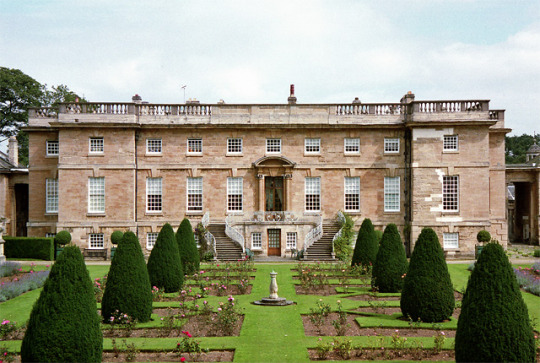
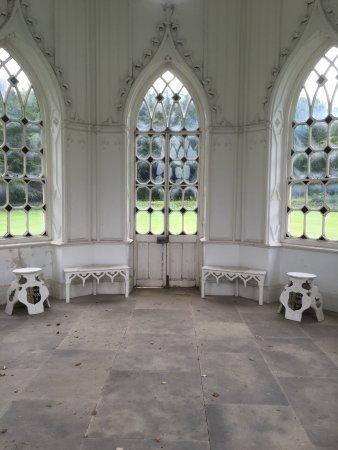
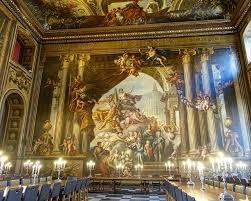

Bramham Park is located in Bramham in Yorkshire, England. Robert Benson, 1st Lord of Bingley, built the country house in the 17th century. The architect designed the house in the style of a 16thcentury Florentine villa. The castle has a central block and is linked to the wings by colonnades. One wing held the kitchen and the other the chapel, symbolizing the balance needed in body and spirit. The central hall is two stories and is done in a Baroque design. Bramham House suffered a fire in 1828 and was abandoned for 80 years. The house remains in the Benson family and was completely restored in the 20thcentury. Bingley is also responsible for laying out the extensive gardens, which cover 900 acres and are divided by avenues, and follies styled like Greek temples. Bramham Estate is home to the Leeds Festival, the International Horse Trials, and other events. Bramham Estate is open to the public.
1 note
·
View note
Text
« Even more than in royal gardens and on noble estates, medieval and early Renaissance automata appeared in churches and cathedrals. Automaton Christs — muttering, blinking, grimacing on the Cross — were especially popular. A mechanical Christ on a crucifix, known as the Rood of Grace, attracted pilgrims to Boxley Abbey in Kent during the 15th century. This Jesus “was made to move the eyes and lipps by stringes of haire”. It could move its hands and feet, nod its head, roll its eyes, and show “a well contented or displeased minde: byting the lippe, and gathering a frowning and disdainful face, when it would pretend offence: and shewing a most milde, amiable, and smyling cheere and countenaunce, when it woulde seeme to be well pleased”.
Mechanical devils were also to be found. Poised in sacristies, they made horrible faces, howled, and stuck out their tongues. The Satan-machines rolled their eyes and flailed their arms and wings; some even had moveable horns and crowns. The Florentine architect Filippo Brunelleschi even mechanized Paradise itself: “a Heaven full of living and moving figures could be seen as well as countless lights, flashing on and off like lightning”. While elsewhere, elaborately engineered hells rumbled with thunder and flashed with lightning, spewing forth writhing automaton serpents and dragons. »
— Jessica Riskin, “Frolicsome Engines: The Long Prehistory of Artificial Intelligence” in Public Domain Review
46 notes
·
View notes
Photo
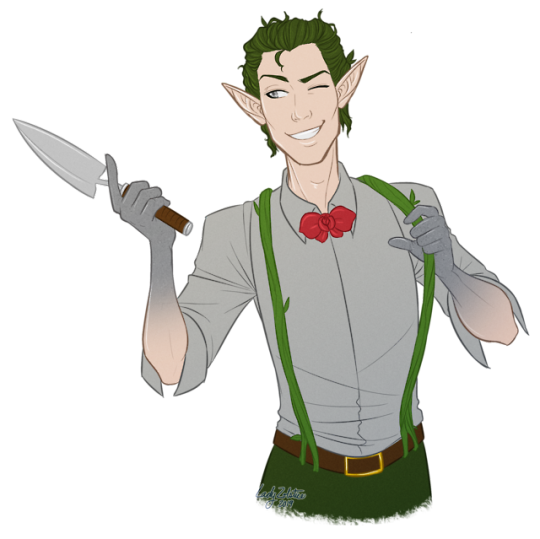
Florentine by LadyZolstice (Original Character)
Aboleth-Eye’s brand new Changeling: the Lost character come to life! A Wizened with the Woodwalker and Earthbones kiths, Florentine was the Head Gardener to a manor estate in the 20s. He ran off into the woods one night after coming across something he shouldn’t have, and his Keeper pulled him into the Hedge from there.
In his obscured Durance, Florentine was forced to tend to the groves of changeling-trees his Keeper owned. Punished for being seen at his work as a lowly garden slave, Florentine’s mutation by the Wyrd shrank his body and bonded it to both plant life and the quiet of stone. However, he discovered a hidden door to the Hedge within the endless screaming groves, and he pulled his Keeper’s favorite specimen in egress.
Setting up shop in the homeless camps of the local city park, Florentine is a dapper favorite among the Spring Court. He watches over the areas of the park where young lovers sneak off to, and feeds on the residual passions that hang in the air. He wishes to create a flawless pleasure garden, untouchable by unwanted guests and the Gentry alike--and he’ll curry favor and do any task to build his future. He dislikes jokes about “garden gnomes” and keeps a sharp eye for hidden doors at all times.
Aboleth-Eye, 1/23/19
I commissioned this from one of my favorite artists and Florentine looks fantastic! Check out @ladyzolstice for her amazing artwork!
#aboleth-eye#LadyZolstice#fantasy art#my characters#changeling the lost#wizened#changeling#original character#character concept#world of darkness#amazing artwork#art on the internet
24 notes
·
View notes
Photo
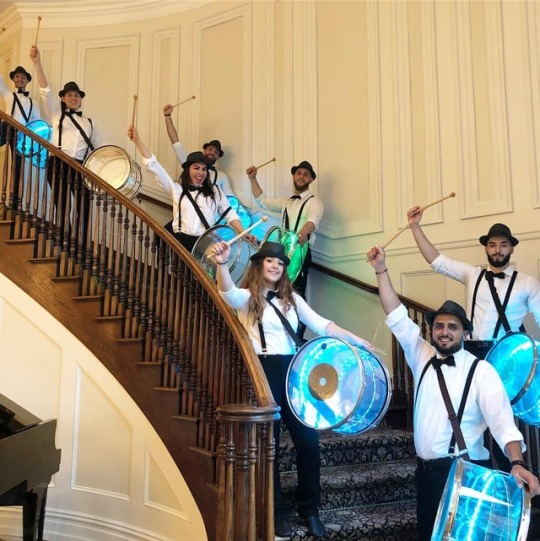
Be unique 🔥🔥🔥 #njwedding #pakistaniwedding #nycwedding #wedding #events #newjersey #newjerseywedding #zaffa #zaffe #zaffeh #lebanesewedding #drummer #drumming #leddrummers #dabka #dabke #cute #love #fashion #grandentrance #picoftheday #زفة (at The Estate at Florentine Gardens) https://www.instagram.com/p/BwQXCNLAlxW/?utm_source=ig_tumblr_share&igshid=1cu0n98pjc3yk
#njwedding#pakistaniwedding#nycwedding#wedding#events#newjersey#newjerseywedding#zaffa#zaffe#zaffeh#lebanesewedding#drummer#drumming#leddrummers#dabka#dabke#cute#love#fashion#grandentrance#picoftheday#زفة
1 note
·
View note
Video
youtube
E&P Wedding Day Slideshow at The Estate at Florentine Gardens River Vale NJ Photography by PSPi A Wedding day slideshow by PSPi New York & New Jersey Wedding & Event Photography & Cinematic Video @pavelshpakphoto The Estate at Florentine Gardens River Vale, NJ. @florentinegardensnj #florentinegardensnj
#New Jersey Wedding Photographer#New Jersey Wedding Venue#NJ Wedding Photographer#NJ Wedding Venue#The Estate at Florentine Gardens
0 notes
Photo
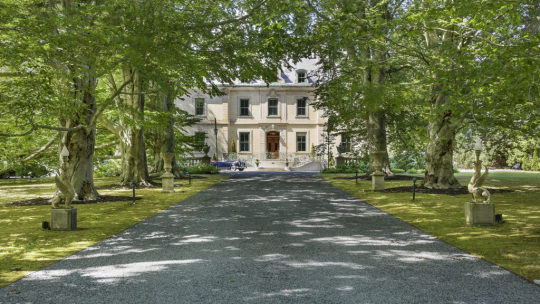
Gilded Age Newport home for $14 million
Get ready to live like Newport’s Gilded Age elite.
Many of Newport’s grand mansions have been converted into museums, but some, like The Orchard, are still private residences. Completed in 1873, The Orchard was designed to replicate a European chateau. It encompasses main and carriage houses that span 24,332 square feet and are surrounded by 4.75 acres of gardens. The estate was recently restored and is being offered furnished and with antiques and art for $14,000,000 (save for a few especially valuable pieces that are available through separate negotiation). Stacie Mills of Vanderbilt International Properties Ltd. has the listing.
Located at 180 Narragansett Ave., the 18,591-square-foot mansion was created for Colonel George R. Fearing and Harriet Travers. Fearing was once president of the Knickerbocker Club in New York City and cofounded Newport Casino. According to the listing, he commissioned a French architect to complete drawings of a French chateau, which were based on an 18th-century country home on the outskirts of Geneva. Newport architectural firm George Champlin Mason & Son then adapted those drawings for the Rhode Island estate.
Today the home’s original gilded gates open to a tree-lined drive leading to an 11-bedroom main house with 11 full bathrooms, three half bathrooms, and 11 fireplaces. The foyer flows into a marble entrance room bordered by some of the home’s many reception areas: a library, a drawing room with garden access, a dining room with French doors to the terrace, a sitting room, a bar and cigar room, and a family room. A laundry room and a kitchen connected to a breakfast room and a walk-in pantry round out this level.
Saunter up the staircase — or take the elevator connecting the first two floors — to the second level, which is home to the primary suite and four bedrooms. The former offers a marble bathroom, a large closet, a dressing room, and a private terrace that looks out to the ocean.
There are six bedrooms on the third floor, while the home’s lower level houses a host of amenities, including a gym and spa, a movie theater, a game room, a staff room, and a heated indoor pool.
The 5,741-square foot carriage house features a three-bay garage, study, conservatory, and two apartments, offering a total of three bedrooms and two baths. The lush grounds feature rare specimen trees, a 150-year-old Florentine bronze and marble fountain, two gazebos, and two heated swimming pools.
See more photos of the home below:
0 notes